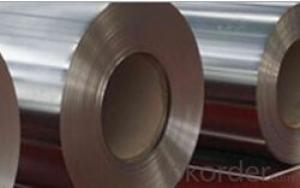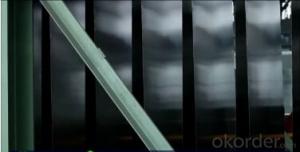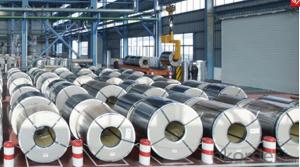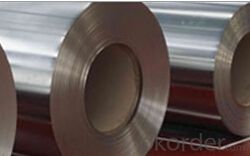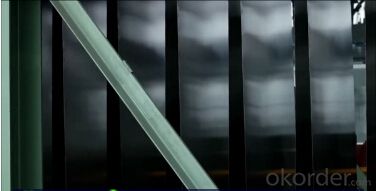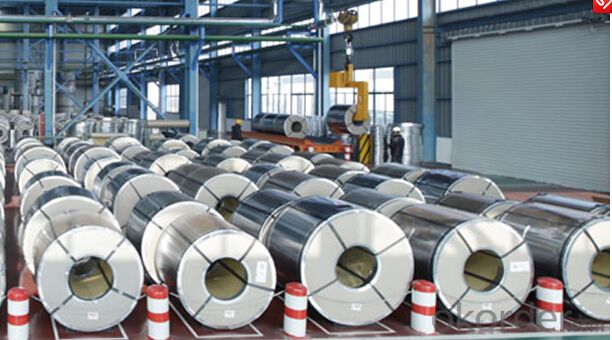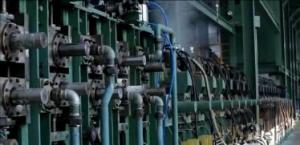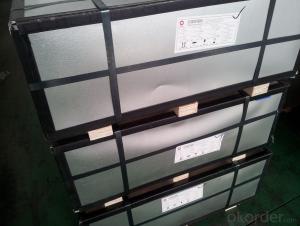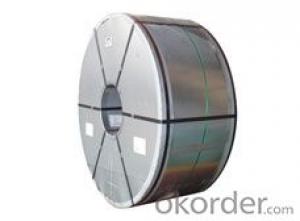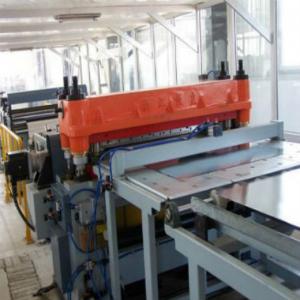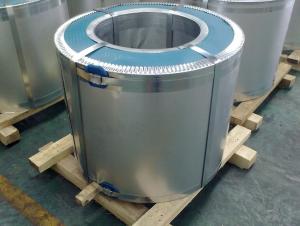Tinplate for South American Market with High Tin Coating
- Loading Port:
- Shanghai
- Payment Terms:
- TT OR LC
- Min Order Qty:
- 25 m.t.
- Supply Capability:
- 1000 m.t./month
OKorder Service Pledge
OKorder Financial Service
You Might Also Like
1.Structure Description
Electrolytic Tinplate Sheets is one of the metal packing materials, which is widely used for making painting cans ,chemical package cans , electrical cable ,battery and metal printing etc.
2. Main Features
Steady and high quality
Fast shipment
Good experience for export work
For the surface, Plate uniform in thickness,uniform and smooth tin coating, without flaws,rusts,scratch,wave,nick of tin coating etc.
Price competitive
3.Images
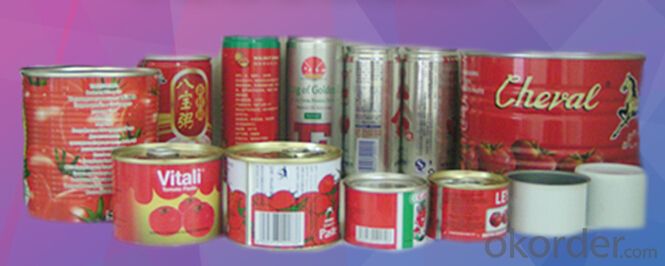
4. Specification
Standard : GB2520-2000 ,JIS G3303
Steel type : SPCC,MR
Coating : 2.8/2.8
Surface: Bright, Stone ,
Thickness:0.18
Width :600MM~1000MM
Temper : T1~T5,DR8
Package: tinplate wrapped completely with an inner cover of plastic or waterproof papers with vorners protected with metal angels.
5.FAQ
A. What is the package of tinplate? (Referred as below)
For sheets, thin plastic film + rust-proof paper + metallic cover + metallic angles+ steel band strips + fumigated wooden pallet.
For coil, thin plastic film + rust proof paper + metallic cover + steel band strips + fumigated wooden pallet
B. The surface of tinplate could you supply?
Stone finish, Bright finish, Matte finish, Silver finish
C. What quantity is the minimum order of tinplate?
Usually, the minimum quantity is 25MT. For special case, consult with us.
D. Can it make to be BA or CA for annealing?
Yes, both can do with.
- Q: How does tinplate affect the overall cost of packaging production?
- Tinplate can significantly affect the overall cost of packaging production. It is a relatively expensive material compared to other packaging options such as cardboard or plastic. The cost of tinplate itself, combined with the additional processes required for its production, can contribute to higher manufacturing costs. However, tinplate offers several advantages such as durability, tamper resistance, and enhanced product protection, which can justify its higher cost for certain products. Additionally, the aesthetic appeal and potential for branding on tinplate packaging can also contribute to increased sales and consumer perception, potentially offsetting the higher production costs. Ultimately, the impact of tinplate on overall packaging cost will depend on the specific requirements, target market, and budget considerations of the product being packaged.
- Q: How does tinplate contribute to the protection of textile products?
- Tinplate contributes to the protection of textile products by providing a durable and corrosion-resistant packaging material. It acts as a barrier against moisture, oxygen, and light, preventing the deterioration of textile products during storage and transportation. Tinplate's protective properties help maintain the quality, color, and integrity of textiles, ensuring they reach consumers in optimal condition.
- Q: Can tinplate be used for aerospace applications?
- Yes, tinplate can be used for certain aerospace applications. It is commonly used for manufacturing small parts and components such as fasteners, connectors, and electrical contacts. However, it is not suitable for high-stress or extreme temperature conditions that are often encountered in aerospace applications. In such cases, more specialized and durable materials like titanium or stainless steel are preferred.
- Q: What are the main applications of tinplate in the stationery industry?
- Tinplate is commonly used in the stationery industry for various applications such as the production of pencil cases, pen holders, stationery boxes, and decorative containers. Its durability and resistance to corrosion make it an ideal material choice, ensuring the longevity of stationery products while providing an attractive and functional design. Additionally, tinplate can be easily customized with vibrant colors and intricate designs, enhancing the visual appeal of stationery items.
- Q: What are the common challenges in recycling tinplate packaging?
- Some common challenges in recycling tinplate packaging include contamination from other materials, such as paper or plastic, which can make the recycling process more difficult and less efficient. Additionally, tinplate packaging often contains a plastic lining or coating, which must be removed before recycling the tinplate itself. Another challenge is that tinplate packaging is often small and lightweight, making it more prone to being lost or mixed in with other waste streams. Finally, there may be limited infrastructure or collection systems in place to effectively collect and recycle tinplate packaging.
- Q: How is tinplate coated for signage?
- Tinplate for signage is typically coated through a process called electroplating, where a thin layer of tin is deposited onto the surface of the metal. This coating provides protection against corrosion and enhances the aesthetic appeal of the signage.
- Q: How does tinplate compare to aluminum packaging?
- Tinplate and aluminum packaging have their own unique advantages and characteristics. Tinplate offers excellent resistance to corrosion, making it ideal for preserving food and beverages. It is also known for its durability and ability to withstand high temperatures. On the other hand, aluminum packaging is lightweight, malleable, and provides a strong barrier against light, oxygen, and moisture. It is widely used in the beverage industry due to its recyclability and sustainability. Ultimately, the choice between tinplate and aluminum packaging depends on specific requirements such as product compatibility, cost, environmental impact, and desired aesthetics.
- Q: What are the common quality standards for tinplate?
- The common quality standards for tinplate include factors such as the thickness and uniformity of the tin coating, the absence of defects like scratches or dents, the adhesion of the tin coating to the base metal, and the overall dimensional and mechanical properties of the tinplate.
- Q: What are the main differences between tinplate and tinplate laminates in terms of product visibility?
- The main difference between tinplate and tinplate laminates in terms of product visibility is that tinplate is a single-layer material made solely of tin, while tinplate laminates are composed of multiple layers, typically tin and another material such as paper or plastic. This means that tinplate laminates offer less product visibility compared to tinplate, as the additional layers can obstruct the view of the product inside the packaging.
- Q: What are the main trends in tinplate recycling?
- The main trends in tinplate recycling include increased awareness and adoption of recycling initiatives, technological advancements in sorting and processing methods, and the promotion of circular economy principles to minimize waste and maximize resource efficiency.
Send your message to us
Tinplate for South American Market with High Tin Coating
- Loading Port:
- Shanghai
- Payment Terms:
- TT OR LC
- Min Order Qty:
- 25 m.t.
- Supply Capability:
- 1000 m.t./month
OKorder Service Pledge
OKorder Financial Service
Similar products
Hot products
Hot Searches
Related keywords
